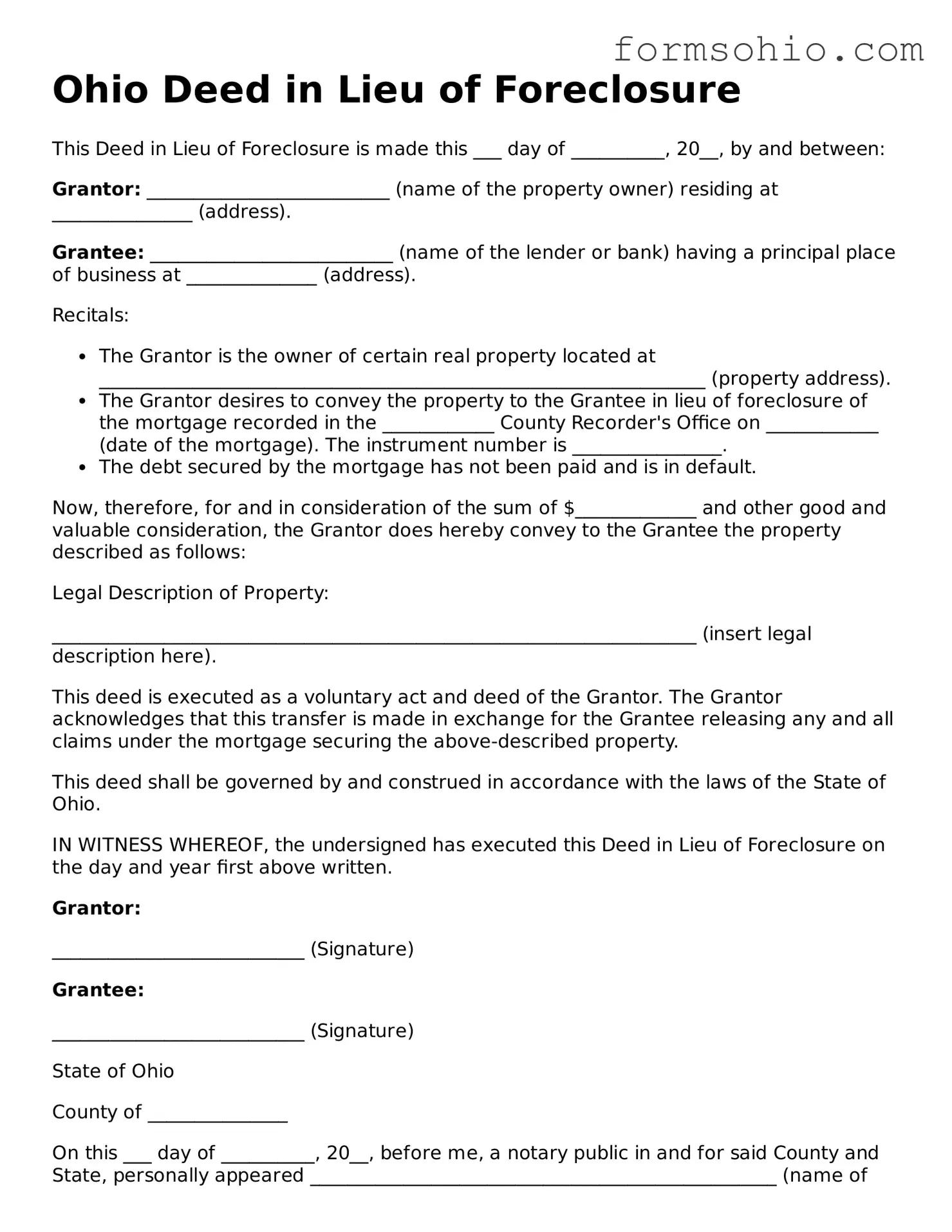Ohio Deed in Lieu of Foreclosure
This Deed in Lieu of Foreclosure is made this ___ day of __________, 20__, by and between:
Grantor: __________________________ (name of the property owner) residing at _______________ (address).
Grantee: __________________________ (name of the lender or bank) having a principal place of business at ______________ (address).
Recitals:
- The Grantor is the owner of certain real property located at _________________________________________________________________ (property address).
- The Grantor desires to convey the property to the Grantee in lieu of foreclosure of the mortgage recorded in the ____________ County Recorder's Office on ____________ (date of the mortgage). The instrument number is ________________.
- The debt secured by the mortgage has not been paid and is in default.
Now, therefore, for and in consideration of the sum of $_____________ and other good and valuable consideration, the Grantor does hereby convey to the Grantee the property described as follows:
Legal Description of Property:
_____________________________________________________________________ (insert legal description here).
This deed is executed as a voluntary act and deed of the Grantor. The Grantor acknowledges that this transfer is made in exchange for the Grantee releasing any and all claims under the mortgage securing the above-described property.
This deed shall be governed by and construed in accordance with the laws of the State of Ohio.
IN WITNESS WHEREOF, the undersigned has executed this Deed in Lieu of Foreclosure on the day and year first above written.
Grantor:
___________________________ (Signature)
Grantee:
___________________________ (Signature)
State of Ohio
County of _______________
On this ___ day of __________, 20__, before me, a notary public in and for said County and State, personally appeared __________________________________________________ (name of Grantor), known to me to be the person who executed the within Deed in Lieu of Foreclosure, and acknowledged that he/she executed the same for the purposes therein contained.
In witness whereof, I have hereunto set my hand and official seal.
____________________________ (Notary Signature)
My commission expires: ________________
